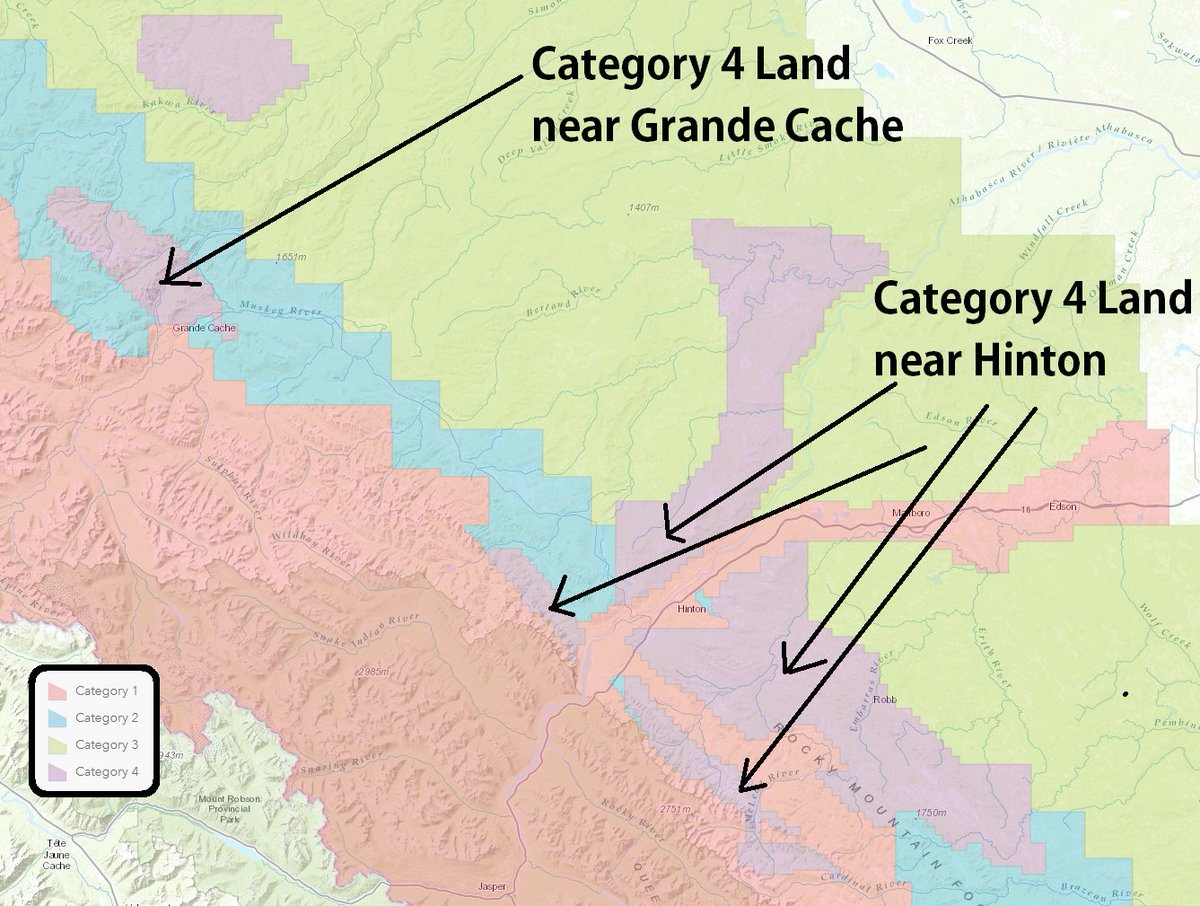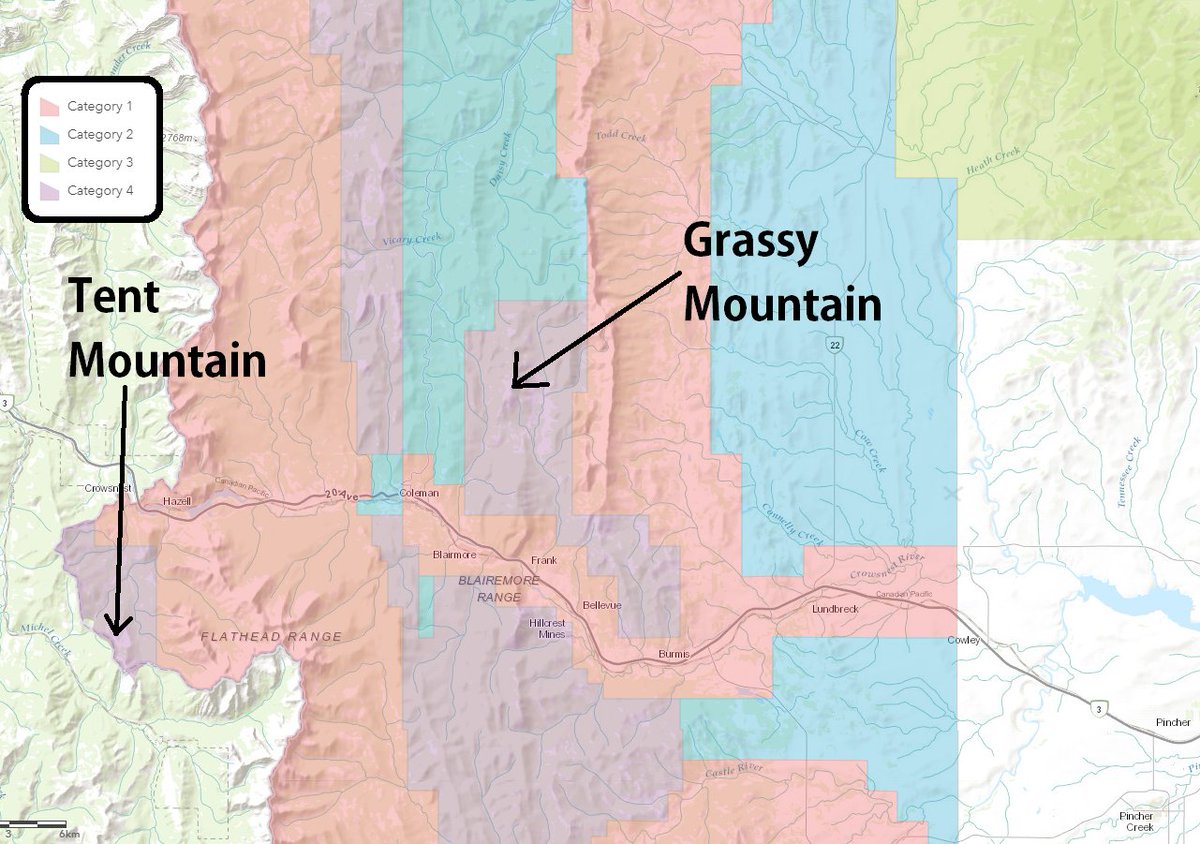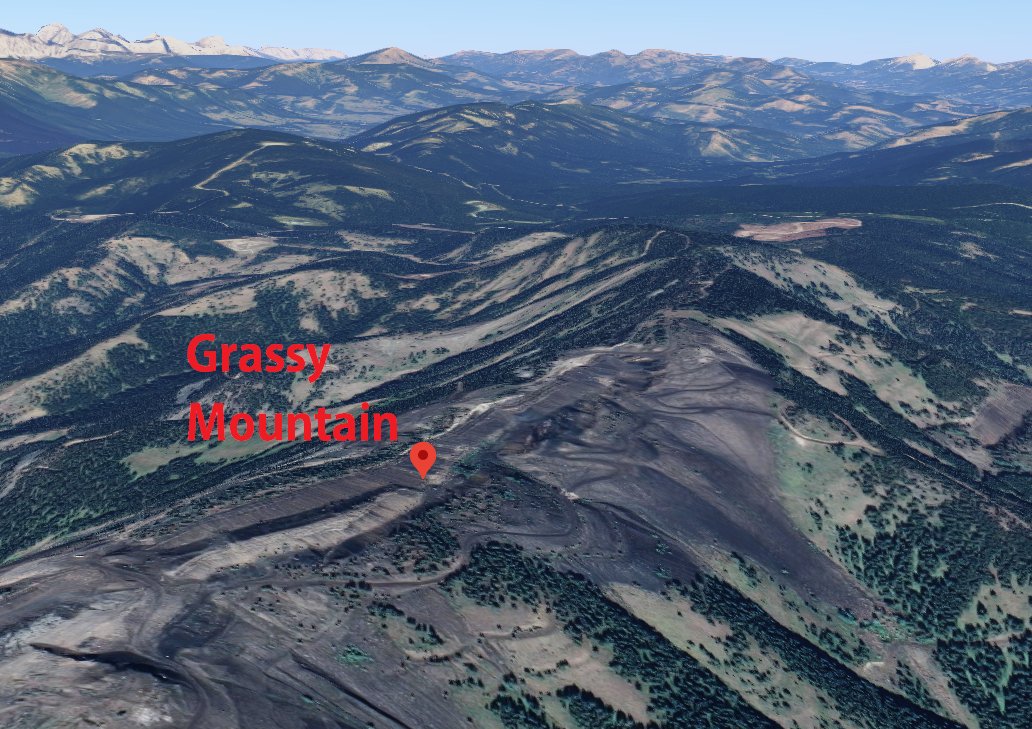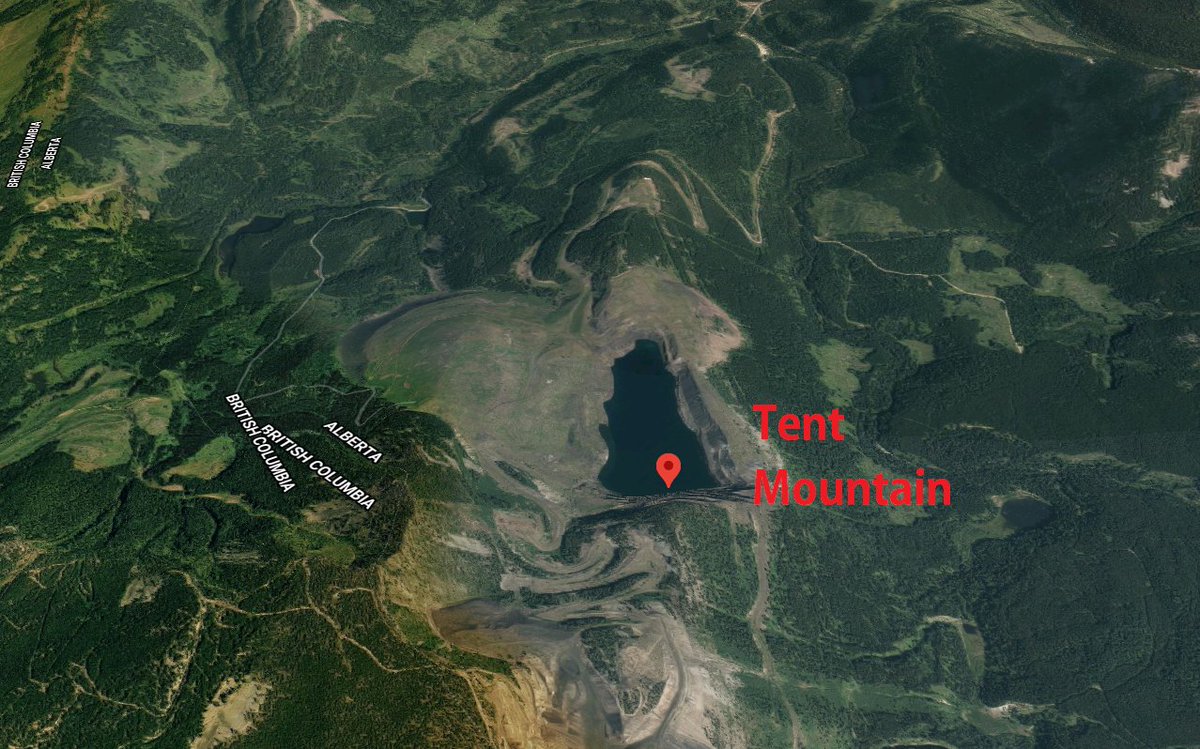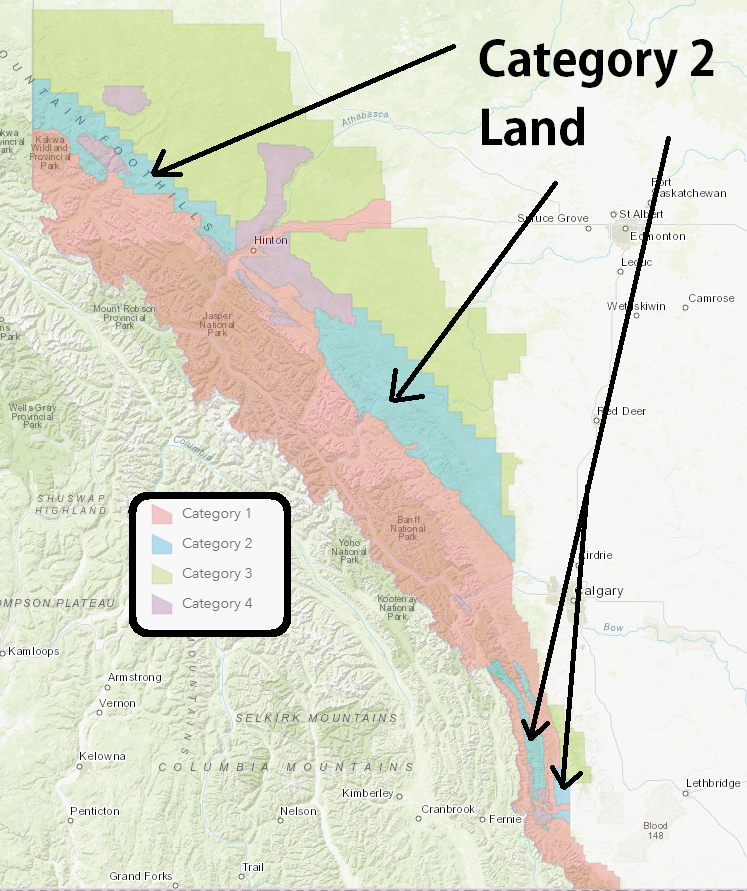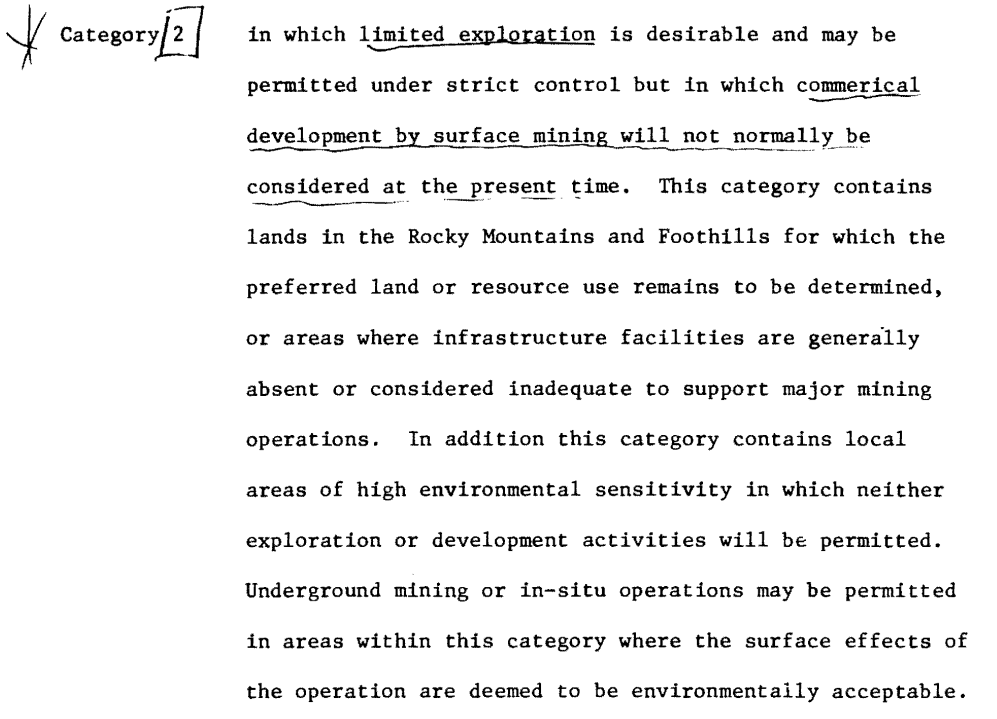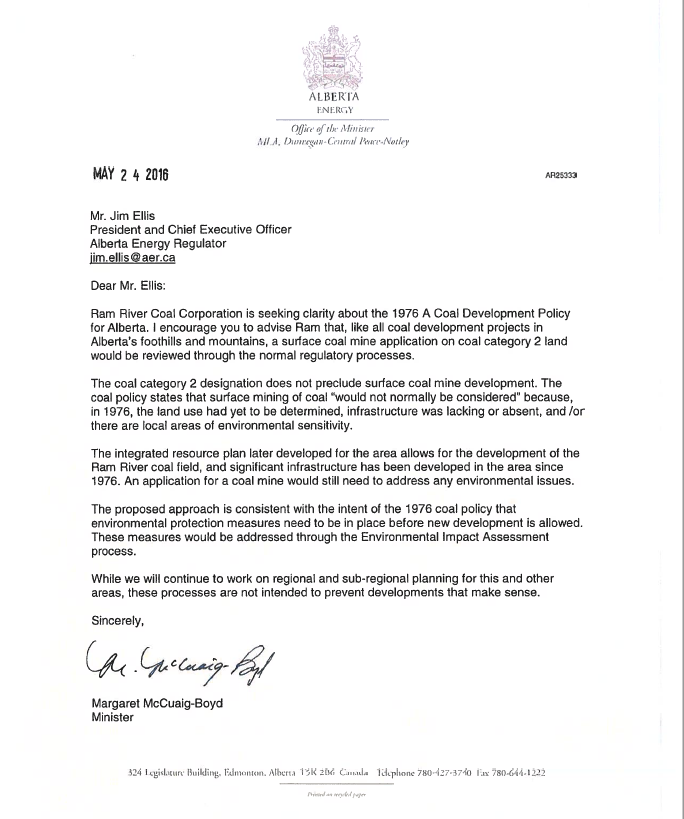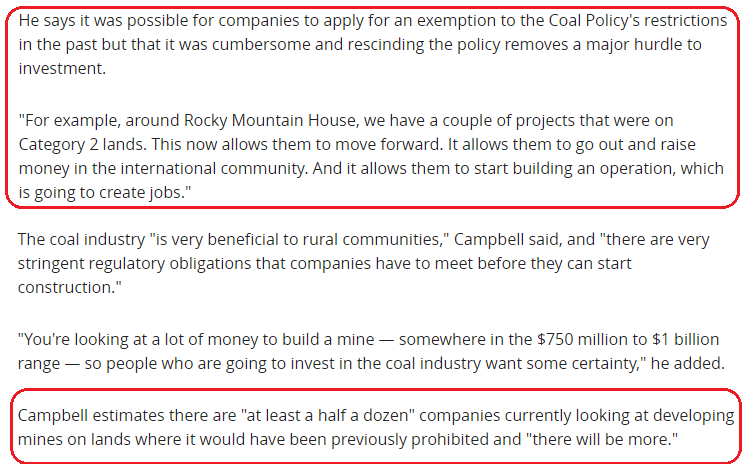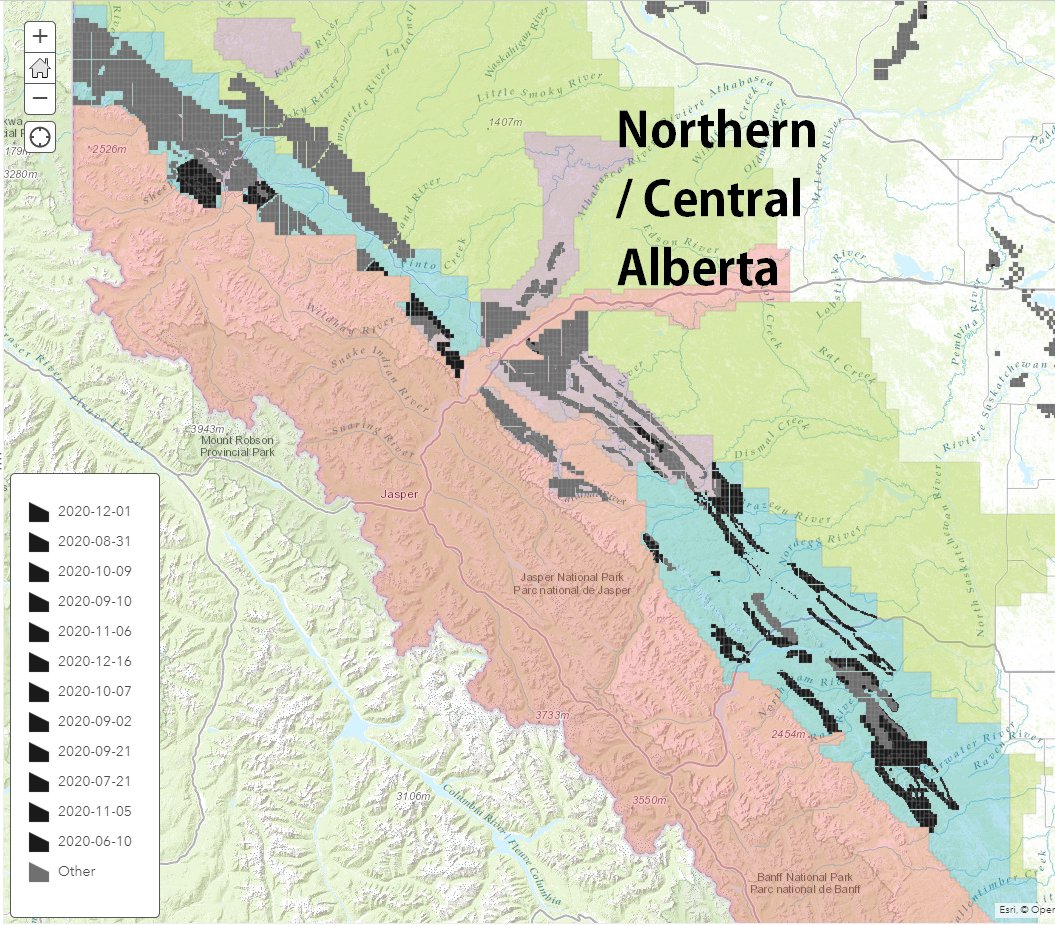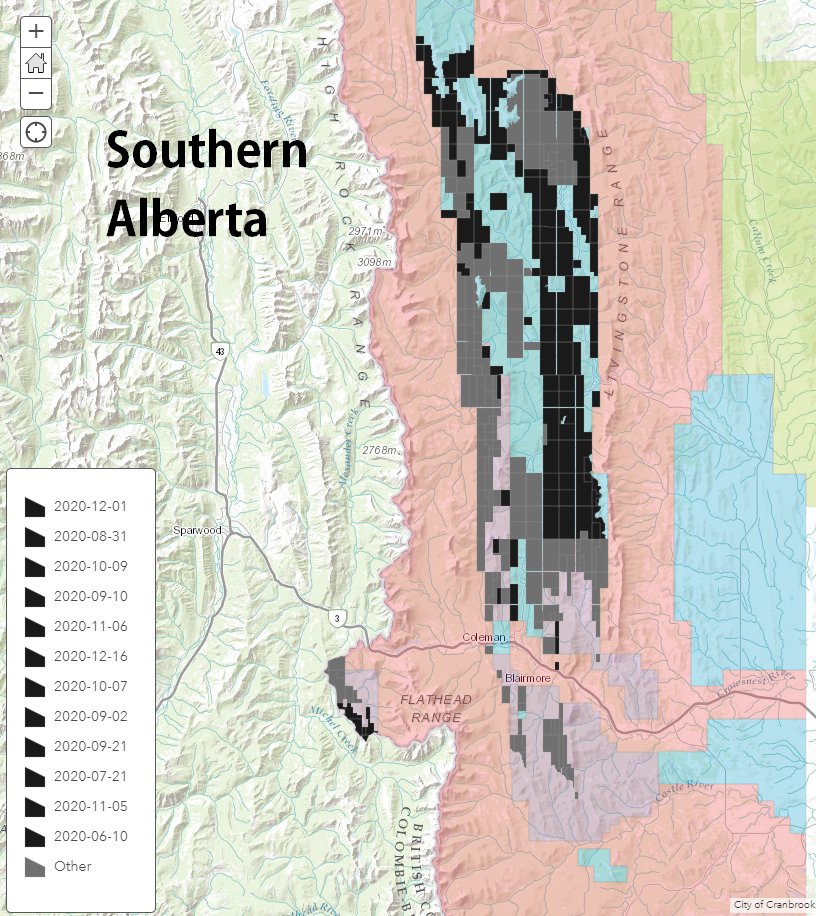In a low-quality video that spread on Twitter last week, Kenney was misheard as saying: "Some people have said our gov't repealed the 1976 coal policy that banned coal mining in the Eastern Slopes. We did no such thing."
That's not what he said.
Here's a better version...(
 )
)
That's not what he said.
Here's a better version...(

 )
)
As you can hear above, what Kenney actually said was: "It did no such thing."
The "It" refers to the coal policy and the "thing" refers to the banning of coal mining on the Eastern Slopes.
Kenney is technically correct here, but he's also attacking a bit of a straw man...
The "It" refers to the coal policy and the "thing" refers to the banning of coal mining on the Eastern Slopes.
Kenney is technically correct here, but he's also attacking a bit of a straw man...
It's true that the Coal Policy didn't outright ban coal mining across all of the Eastern Slopes of the Rocky Mountains.
What it did was heavily restrict open-pit mining in large sections of the Eastern Slopes.
What's the difference?
Let's split that hair...
What it did was heavily restrict open-pit mining in large sections of the Eastern Slopes.
What's the difference?
Let's split that hair...
Firstly, there were sections of the Rockies / Eastern Slopes where open-pit mining was specifically allowed under the 1976 Coal Policy.
These were "Category 4" lands and they included sections of land near Hinton & Grande Cache where mines have operated for decades.
These were "Category 4" lands and they included sections of land near Hinton & Grande Cache where mines have operated for decades.
There were also chunks of Category 4 land in the mountains much further south, near Crowsnest Pass.
These are where the Grassy Mountain & Tent Mountain projects are now being proposed. (Both were previously mined sites.)
These are where the Grassy Mountain & Tent Mountain projects are now being proposed. (Both were previously mined sites.)
But it's not the Category 4 areas (in purple) that have been especially controversial.
It's the Category 2 areas (in blue) that have raised more concerns.
Why?
Let's read what the actual 1976 Coal Policy said about that (and be ready to split one more hair!) ...
It's the Category 2 areas (in blue) that have raised more concerns.
Why?
Let's read what the actual 1976 Coal Policy said about that (and be ready to split one more hair!) ...
The 1976 Coal Policy said "surface mining" (aka open-pit mining) "will not normally be considered" on Category 2 lands.
The "normally" there is doing a lot of work.
The UCP has recently adopted a strategy of saying this was not an *outright* ban.
Again, technically true.
The "normally" there is doing a lot of work.
The UCP has recently adopted a strategy of saying this was not an *outright* ban.
Again, technically true.
The UCP has also started circulating this 2016 letter from former NDP Energy Minister Marg McCuaig-Boyd, in which she encourages the AER to offer clarity to Ram River Coal Corporation about the intricacies of the coal policy.
She notes that word "normally," in particular...
She notes that word "normally," in particular...
And then in 2017 Ram River Coal indeed put forward technical and pre-feasibility studies on the prospects for coal development in the area.
You can read them here: https://www.ramcoal.com/aries-project
You can read them here: https://www.ramcoal.com/aries-project
It's 100% true and worth noting that previous governments (both NDP & PC) didn't rule out, full stop, any type of coal exploration or development in Category 2 lands.
But that's quite different from removing the Category 2 restrictions altogether, as the UCP did last spring...
But that's quite different from removing the Category 2 restrictions altogether, as the UCP did last spring...
And killing the Category 2 rules, in effect, opened the door for investment in coal projects that wouldn't have otherwise happened, according to Coal Association of Canada president (& former Alberta environment minister) Robin Campbell:
https://www.cbc.ca/news/canada/calgary/alberta-coal-policy-rescinded-mine-development-environmental-concern-1.5578902
https://www.cbc.ca/news/canada/calgary/alberta-coal-policy-rescinded-mine-development-environmental-concern-1.5578902
Companies also started buying, updating or exercising coal leases (many held lease *applications* for decades) throughout Category 2 lands after the 1976 Coal Policy was rescinded.
The dark black areas are leases dated after June 1, 2020. Grey = leases from prior to that date:
The dark black areas are leases dated after June 1, 2020. Grey = leases from prior to that date:
It's this sudden ramping up of coal activity in Category 2 lands, where for decades such activity was rare or non-existent, that has many Albertans spooked.
Which brings us back to Kenney's point...
Which brings us back to Kenney's point...
It's true the 1976 Coal Policy didn't ban coal mining in the Eastern Slopes.
But it's also true that rescinding the policy was seen by industry as a green light for open-pit mining in a large subset of those slopes (Category 2 land), after decades of heavy restrictions.
But it's also true that rescinding the policy was seen by industry as a green light for open-pit mining in a large subset of those slopes (Category 2 land), after decades of heavy restrictions.

 Read on Twitter
Read on Twitter